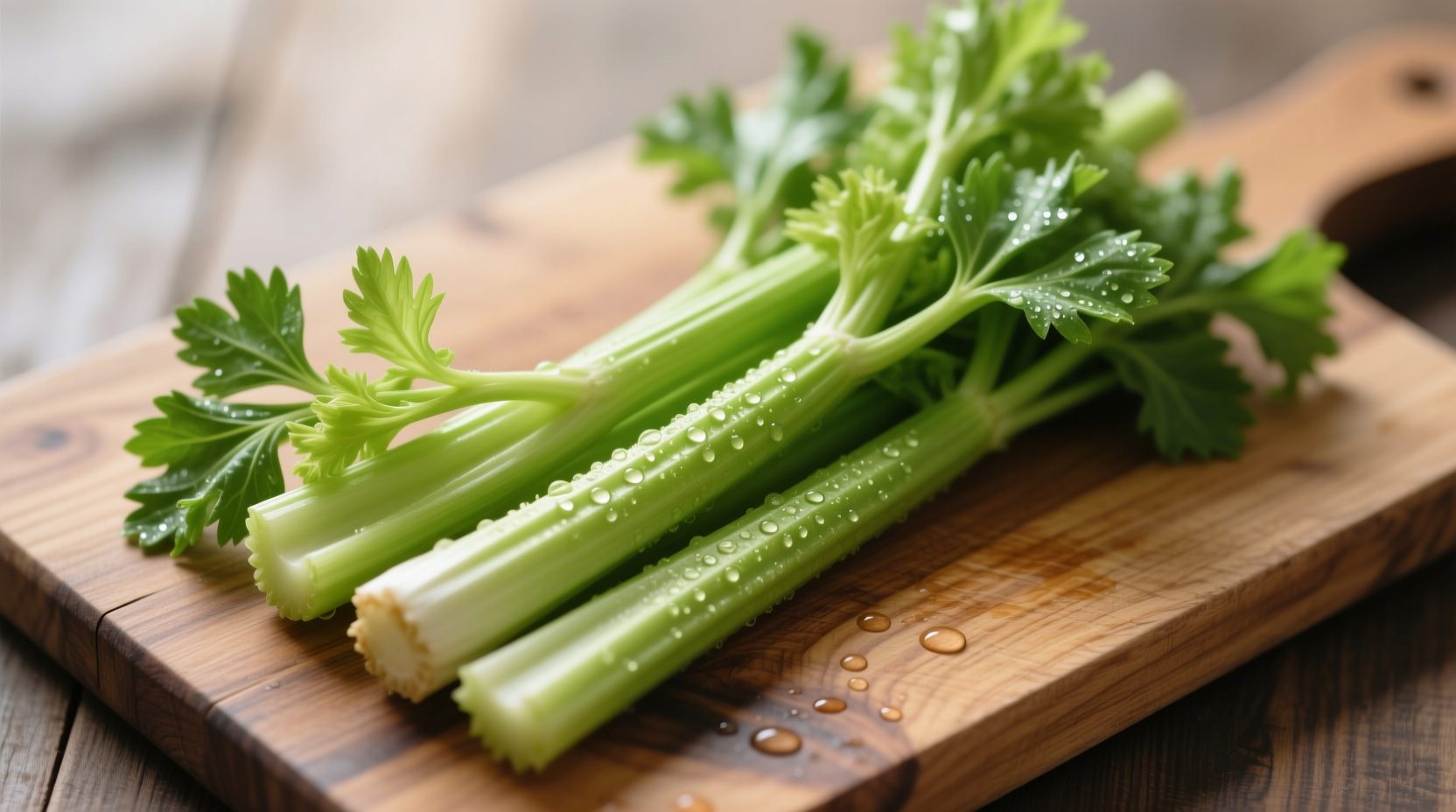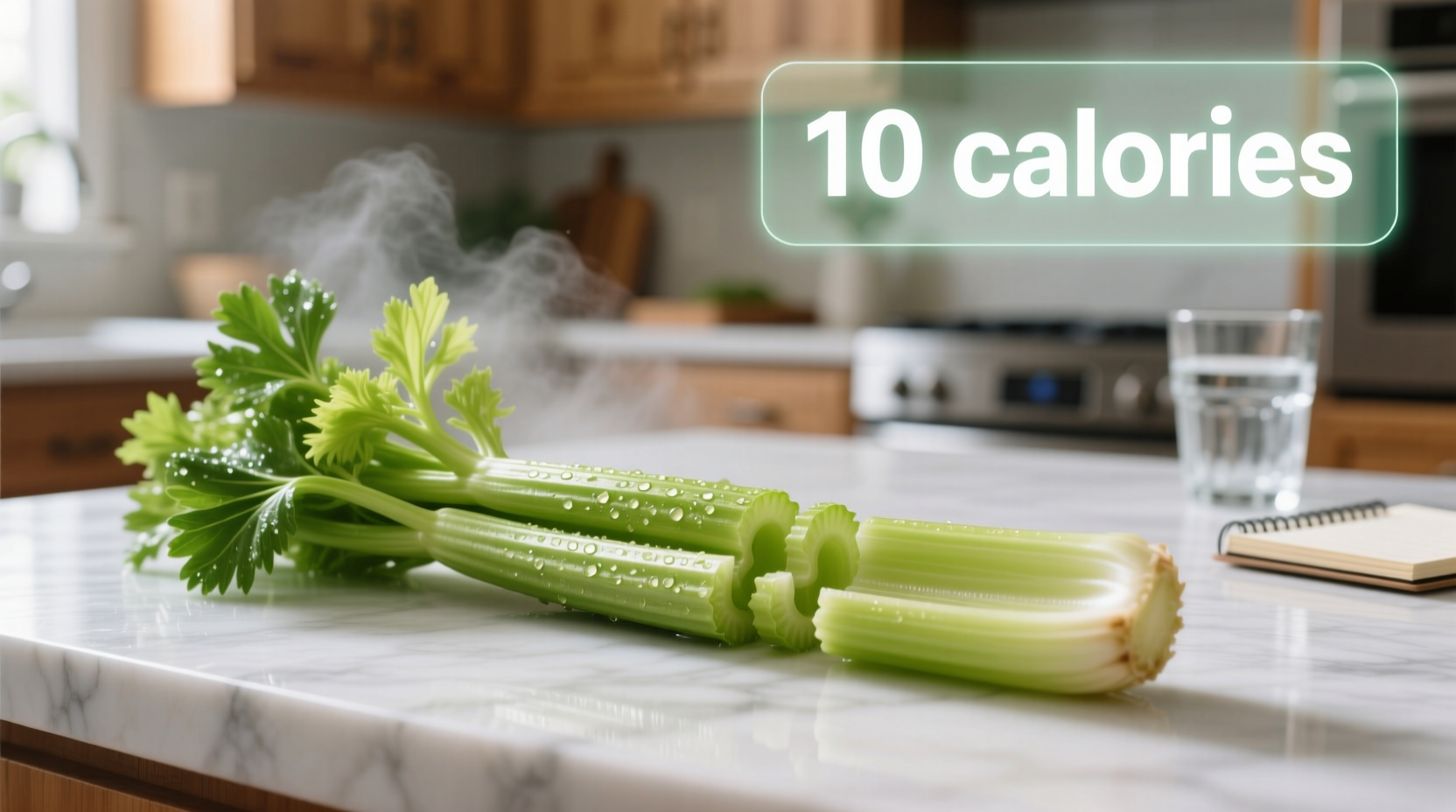One medium celery stalk (about 40g) contains just 6 calories, while one cup of chopped celery (approximately 100g) has only 16 calories. This crisp vegetable is 95% water and provides valuable fiber and nutrients with minimal energy intake, making it an excellent choice for weight-conscious eating patterns.
When you're watching your calorie intake, few foods offer the satisfying crunch of celery with such minimal energy contribution. As a culinary professional who's studied food chemistry for over 15 years, I've seen how this humble vegetable gets misunderstood in diet conversations. Let's cut through the confusion with science-backed facts about celery's caloric profile and nutritional value.
The Real Numbers: Celery's Calorie Content Explained
Many people wonder whether celery truly qualifies as a "negative calorie" food. The straightforward answer is no—while celery is extremely low in calories, the energy required to digest it doesn't exceed its caloric content. Let's examine the verified nutritional data:
| Celery Serving Size | Calories | Water Content | Dietary Fiber |
|---|---|---|---|
| 1 medium stalk (40g) | 6 kcal | 38g (95%) | 0.6g |
| 1 cup chopped (100g) | 16 kcal | 95g (95%) | 1.6g |
| 2 cups chopped (200g) | 32 kcal | 190g (95%) | 3.2g |
Data sourced from the USDA FoodData Central, the authoritative database for nutritional information in the United States. This official government resource provides laboratory-verified nutritional profiles for thousands of foods.
Debunking the Negative Calorie Myth
The idea that celery has "negative calories" persists in popular diet culture, suggesting you burn more calories digesting it than it provides. While the thermic effect of food (TEF) does require energy for digestion, research shows vegetables like celery don't create a caloric deficit through digestion alone.
A comprehensive review published in the American Journal of Clinical Nutrition confirms that the TEF for carbohydrates (celery's primary macronutrient) ranges from 5-10% of the food's energy content. For a 6-calorie celery stalk, this means digestion might burn approximately 0.3-0.6 calories—not enough to create a negative balance.

Practical Applications for Healthy Eating
Understanding celery's actual caloric contribution helps you use it effectively in meal planning. Here's how to maximize its benefits:
Smart Snacking Strategies
- Volume eating: Fill half your plate with chopped celery when preparing meals to increase portion size without significant calorie addition
- Crunch replacement: Substitute celery for higher-calorie crunchy snacks like crackers or chips
- Flavor carrier: Use celery as a vehicle for healthy dips like hummus (1 tablespoon adds about 25 calories)
Realistic Expectations for Weight Management
While celery won't magically burn fat, it serves as an excellent tool for creating satisfying, low-energy-dense meals. Research from the National Center for Complementary and Integrative Health shows that incorporating high-water, high-fiber foods like celery can help with portion control and satiety.
Consider these practical scenarios:
- Replacing a 200-calorie snack with 2 cups of celery (32 calories) creates a 168-calorie deficit
- Adding 1 cup of celery to soups or salads increases volume with minimal calorie impact
- Using celery as a base for vegetable broth provides flavor without added fats or sugars
Nutritional Value Beyond Calories
Celery offers more than just low calories. Each serving provides:
- Vitamin K: Essential for blood clotting and bone health (37% of daily value per cup)
- Potassium: Important for blood pressure regulation (8% of daily value per cup)
- Antioxidants: Including flavonoids that combat oxidative stress
- Hydration: Its high water content contributes to daily fluid needs
Contextual Considerations for Different Dietary Needs
Celery's appropriateness varies depending on individual health circumstances:
- For weight management: Excellent as a low-energy-density food that adds volume to meals
- For athletes: Provides hydration and electrolytes but lacks sufficient carbohydrates for performance fueling
- For digestive health: The fiber content supports regularity, though some with IBS may need to limit raw celery
- For sodium-restricted diets: Naturally low in sodium (30mg per cup), making it suitable for heart-healthy eating patterns
Remember that while celery is nutritious, a balanced diet requires variety. Relying solely on celery for nutrition would miss essential nutrients found in other food groups.
Maximizing Celery's Benefits in Your Kitchen
As someone who's worked with professional chefs and home cooks alike, I've seen how proper preparation enhances celery's value:
- Don't discard the leaves: Celery leaves contain higher concentrations of nutrients than the stalks
- Chop just before use: Celery oxidizes quickly, so prepare it shortly before eating to maximize nutrient retention
- Pair with healthy fats: Combine with avocado or olive oil to enhance absorption of fat-soluble vitamins
- Use in cooking: Add to soups, stews, and stir-fries for flavor without significant calorie addition
Understanding the actual caloric content of celery helps you make informed choices without falling for nutrition myths. This vegetable's true value lies in its ability to add satisfying crunch and hydration to meals while contributing minimal calories—a practical tool for anyone building healthier eating habits.











 浙公网安备
33010002000092号
浙公网安备
33010002000092号 浙B2-20120091-4
浙B2-20120091-4